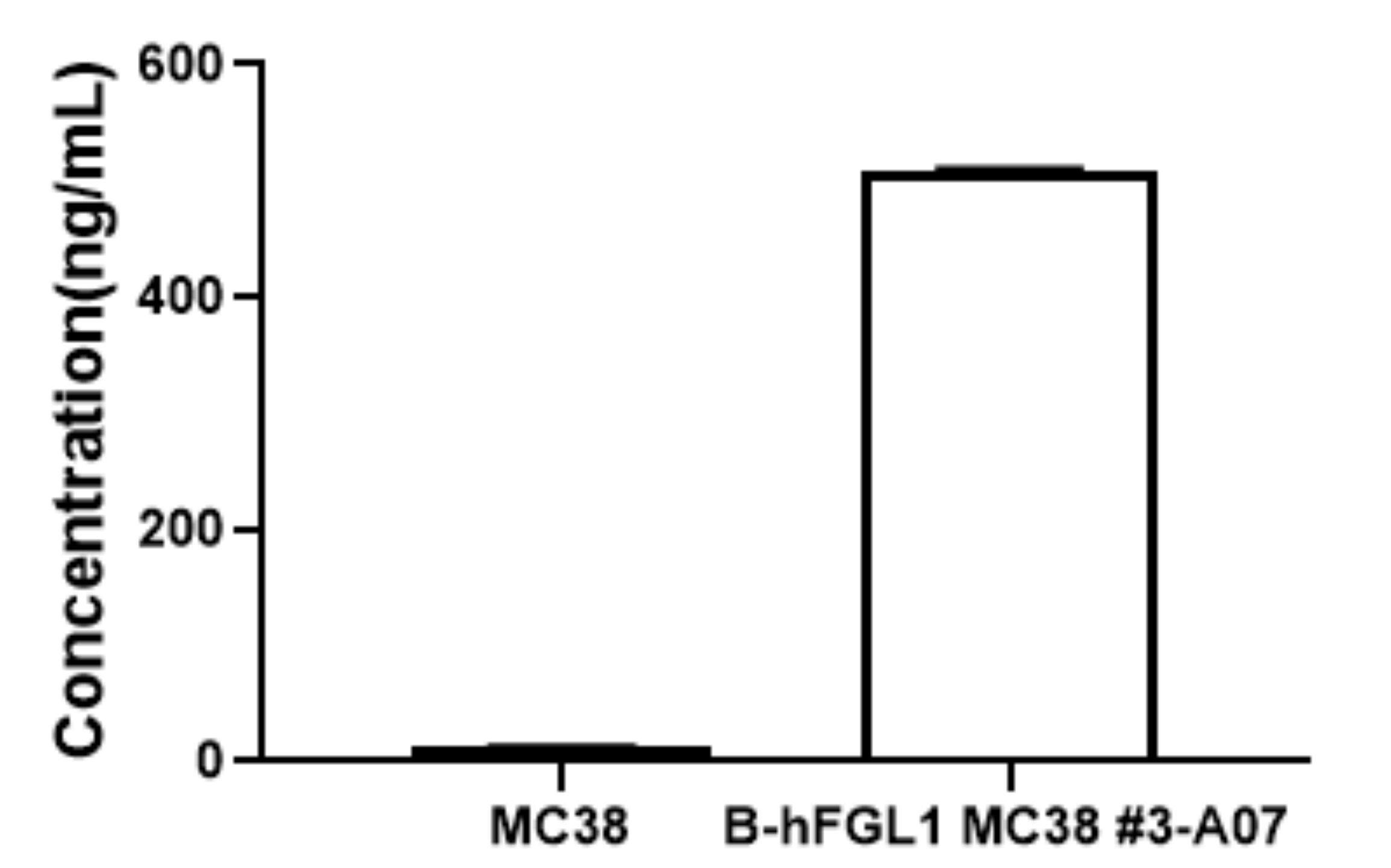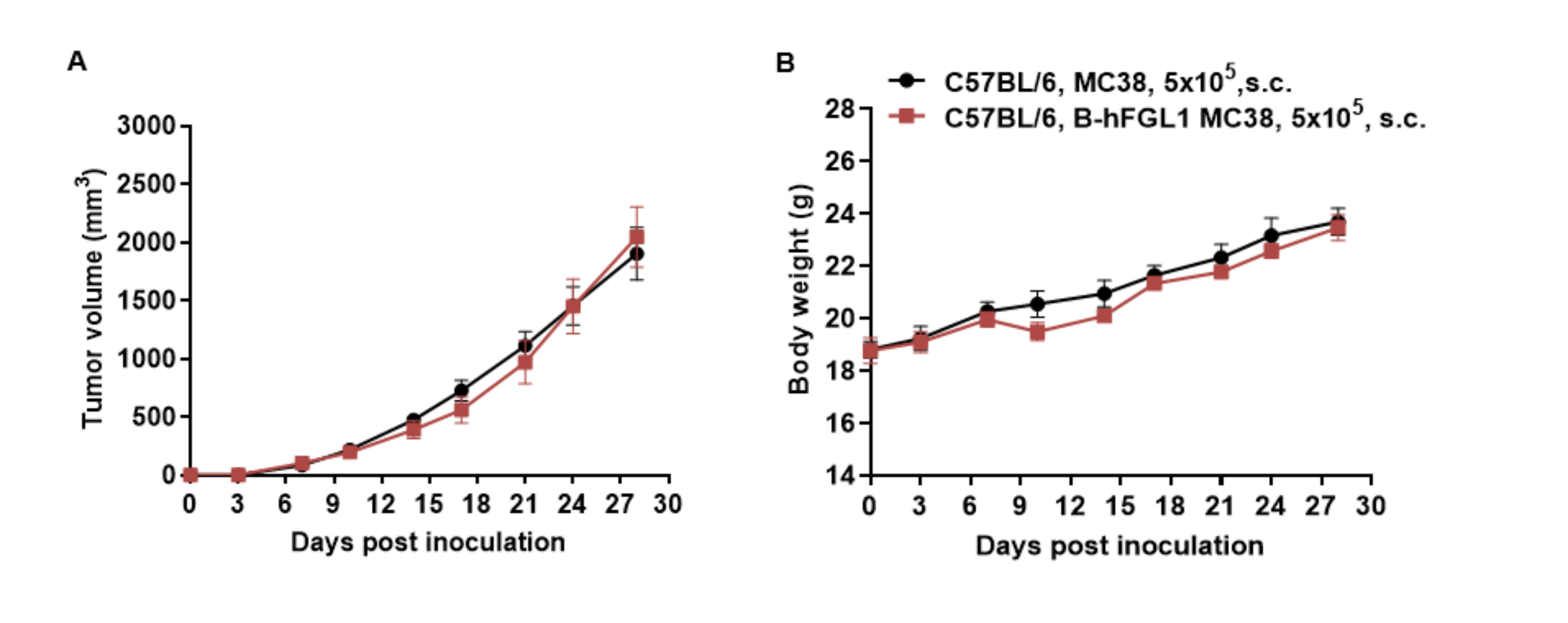|
Common name |
B-hFGL1 MC38 | Catalog number | 311270 |
| Aliases |
HFREP1, HP-041, HPS, LFIRE1, fibrinogen like 1 |
Disease | Colon carcinoma |
|
Organism |
Mouse |
Strain | C57BL/6 |
| Tissue types | Colon | Tissue | Colon |
Description
The mouse Fgl1 gene was replaced by human FGL1 coding sequence in B-hFGL1 MC38 cells. Human FGL1 is highly expressed and secreted by B-hFGL1 MC38 cells.
Protein expression analysis

FGL1 expression analysis in B-hFGL1 MC38 cells by ELISA. Supernatant from wild-type MC38 and B-hFGL1 MC38 cultures were stained with species-specific anti-FGL1 antibody. Human FGL1 was detectable in the supernatant of B-hFGL1 MC38 cells but not in that of wild-type MC38 cells. The 3-A07 clone of B-hFGL1 MC38 cells was used for in vivo experiments.

Subcutaneous homograft tumor growth of B-hFGL1 MC38 cells. B-hFGL1 MC38 cells (5x105) and wild-type MC38 cells (5x105) were subcutaneously implanted into C57BL/6N mice (female, 8-week-old, n=6). Tumor volume and body weight were measured twice a week. (A) Average tumor volume ± SEM. (B) Body weight (Mean± SEM). Volume was expressed in mm3 using the formula: V=0.5 X long diameter X short diameter2. As shown in panel A, B-hFGL1 MC38 cells were able to establish tumors in vivo and can be used for efficacy studies.












 京公网安备:
京公网安备: